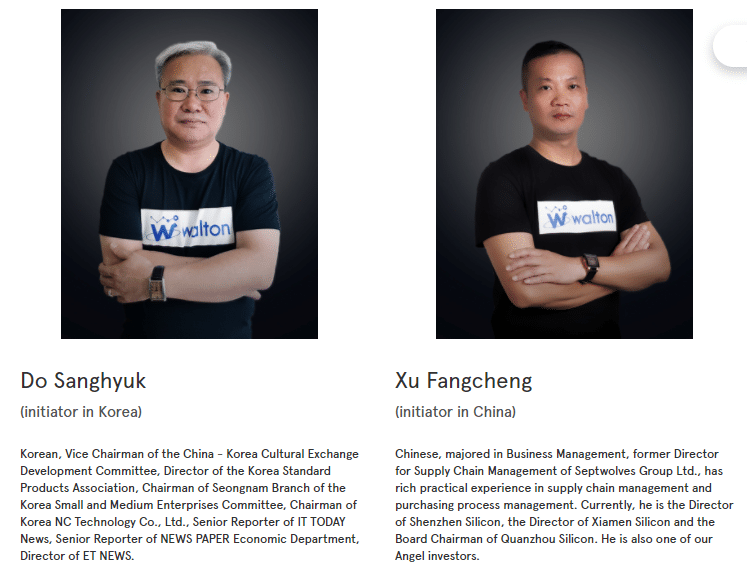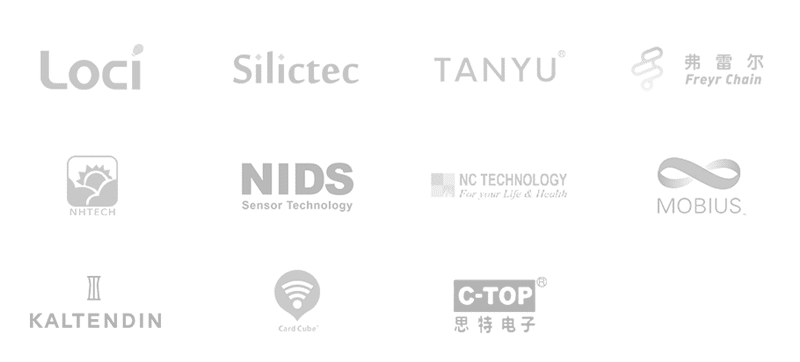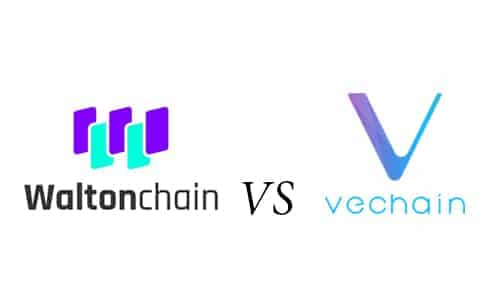Review of Waltonchain (WTC): Everything You Need to Know
Waltonchain aims to bring harmony and efficiency to the world of logistics and supply chain management as current systems are complex and often involve a number of fragmented parties.
As a result, it’s still difficult for organizations and businesses to coordinate their operations across various parts of the supply chain and maintain a unified, secure method of operation.
Waltonchain promises to allow individual entities to align their various processes via the blockchain and to provide a secure ecosystem for management and verification that makes use of the Internet of Things (IoT) and Radio-frequency identification (RFID) technology.
What is Waltonchain (WTC)?
Waltonchain came to life in 2016; when a group of developers from China and South Korea came together in order to establish the project. Waltonchain utilizes IoT technology, RFID, and the blockchain to create a management system for supply chains.
This unique mixture of technology allows the team behind the project to track products during each step of the production and distribution processes. This is made possible via the use of RFID technology, while the data associated with each item is stored on a blockchain that ensures accuracy and allows the information to be instantly verifiable.
The project is named after Charlie Walton, the inventor of RFID technology and also acts as an acronym for Wisdom Alters Label Trade Organization and Network. RFID technology can be used by a wide range of applications and use cases include identification, verification, and payment validation as well as tracking a variety of processes.

The team behind Waltonchain is academically distinguished and has amassed plenty of experience dealing with supply chains across Asia. Co-founder Do Sanghyuk has held the positions of Vice Chairman of the China - Korea Cultural Exchange Development Committee, Director of the Korea Standard Products Association, and Chairman of Korea NC Technology Co., Ltd.
Co-founder Xu Fangcheng, is a former Director for Supply Chain Management of Septwolves Group Ltd., and is currently the Director of Shenzhen Silicon, Xiamen Silicon and the Board Chairman of Quanzhou Silicon.
IoT specialist Mo Bing is a Doctor of Engineering and graduated from Harbin Institute of Technology, while blockchain engineer Wei Songjie is also a Doctor of Engineering and graduated from the University of Delaware, Wei also has experience of working at Qualcomm and Google.
How does Walton Chain work?
The Waltonchain team has developed the Value Internet of Things concept to help describe their method of blending proprietary RFID chips with blockchain technology, and the merger allows blockchains to store data representations of physical items on-chain via RFID tags.
RFID tags make use of electromagnetic fields to identify objects and scanning an RFID tag provides the user with all the available information. This can include the product’s starting location, where it is presently located, and who has handled it, in addition to other important data.
RFID tags can be attached to any object, and work more efficiently than barcodes as they can be read by machines without having to scan the direct code. RFID can be used in inventory/luggage tracking, toll collections, product kiosks, library systems, and the verification of travel documents.

In addition, RFID can also be used for access management, contactless payments, and smartdust, which is a system of microsensors that can detect light, temperature, chemicals, and even vibration or magnetism.
Parent and Sub Chains
The Walton Chain acts as the parent chain that manages various sub chains, tracks transactions and executes smart contracts. The token used for circulation and payment on the parent chain is Waltoncoin (WTC). WTC can be used to trade data, perform various transactions on the parent chain, and to create sub-chains that utilize their own tokens, similar to how Ethereum facilitates the creation and use of ERC20 tokens. Sub-chain tokens can also be traded on the decentralized exchange hosted on the parent chain, and WTC is used as the intermediary currency.
The sub chains can be created by anyone using Waltonchain technology and can also elect to use a consensus algorithm different from the Proof of Stake & Trust (PoST) consensus used on the parent chain. PoST is similar to Proof of Stake (PoS) and rewards token holders or nodes with dividend payments made in WTC. PoST also contains a node reputation mechanism that facilitates additional rewards to higher quality and more honest nodes. As a result, WTC token holders can receive dividends by holding tokens in their wallets.
The sub chain system has a number of benefits, for example businesses can customize a blockchain to suit their specific needs. The sub chains sit on top of the parent chain and can be used for specific purposes, such as tracking different clothing brands or apparel lines, and measuring the success of different lines across a variety of different stores.
This system also aids network performance, as the majority of the data resides on a business’s sub chain, and any increase in their activity won’t clog up the entire network.
How viable is the Project?
Waltonchain is one of the most viable projects on the market to date, in that it aims to serve industries that are in need of utilizing RFID technology backed by the blockchain. RFID tags currently cost about $0.1 per unit and are affordable and widely used.
Wal-Mart began implementing the technology in its supply chain in 2003, and the US Department of Defence states that all military supplies have had to use RFID tags since 2005. The US Food and Drug Administration (FDA) has also recommended that pharmaceutical companies use RFID to trace their products since 2006.
Waltonchain acts as a supply chain platform and a technology that enables anyone to create their own sub chains. Waltonchain is a popular project that has the potential to transform how firms operate their businesses.
Waltonchain’s Value internet of Things system has a number of clear benefits, which include:
- Reliable anti-counterfeiting via RFID identification
- Accurate product tracking and verification
- Improved security as a result of immutable blockchain technology
- Decentralization trustless mechanisms
- Streamlined supply chain processes
Waltonchain also has an impressive array of partnerships, and many are with Chinese provincial governments. There is a project backed by the Fujian government to create a smart maritime blockchain incubator, and one supported by the Jinhu government to build smart air purification and monitoring systems. On top of this, the Waltonchain team has developed partnerships with organizations such as Silictec, Sensor Technology (NIDS), NHTECH, and TANYU.

Waltonchain is also expanding beyond the world of supply chain management and has a set growth strategy.
4 Phase development plan
The Waltonchain team has outlined four distinct growth phases and phase 1.0 involved the development of the RFID clothing system integration scheme. The team is developing the RFID tag system and adopting the proprietary asymmetric encryption algorithm.

Phase 2.0 involves establishing Waltonchain in the clothing, retail and logistics industries, while phase 3.0 sees the team planning to apply their technology more widely across the manufacturing industry.
The aim is to help develop a standardized and reliable record of the entire manufacturing processes, starting from the purchasing of material, and moving onto assembly operation, production, packaging and inventory management.
Phase 4.0 outlines the upgrading of both hardware and of the blockchain data structure. As the system is improved all physical assets will be able to register in Waltonchain in the future.
Should I Invest in WTC?
Waltonchain launched with 100 million coins being issued, and there are approximately 70 million coins in reserve with around 25 million currently in supply, and the remaining coins will be mined over the coming years. WTC hit the market as an under the radar project for western investors and debuted at a price of around $1.00 in August 2017.
WTC is currently trading at a price of just over $10 and retains a market cap of around $263m; this is significantly down from its all time high price of around $43 which saw it achieve a market cap in excess of $1B in January.
The project is quite solid and WTC can be used to issue sub chains, process transactions on the parent chain, distribute dividend interest, make transfers on the decentralized exchange and maintain the voting and governance system.
WTC is also extremely well established and is available to be traded on a number of cryptocurrency exchanges such as Binance, Kucoin, OKEx, Coinnest, and HitBTC. As a result, WTC benefits from a high level of liquidity and is currently generating daily trading volumes worth millions of US Dollars.
Competition From VeChain

However, like any blockchain based project, there are possible negative factors to consider and Waltonchain encounters direct competition in the form of VeChain. Despite rebranding to VeChain Thor, the team behind the project also provide blockchain-based solutions for the supply chain industry, and VeChain also enables enterprises to build DApps on their platform.
In addition, VeChain is focusing on luxury goods while Waltonchain started out with clothing apparel and Waltonchain is moving forward with RFID chips while VeChain also includes NFC and QR codes. The two projects may be targeting different markets, however VeChain has proved to be popular with investors and the VEN token currently retains a market cap of approximately $1.6B and inhabits the top 20. As a result, there is always the possibility that VeChain will attract attention away from Waltonchain.
Marketing Challenges
In addition, as a project based in both China and South Korea, Waltonchain needs to continuously implement a successful marketing strategy in order to positively influence investors based in the west. The recent scandal involving a Twitter giveaway competition had an adverse effect on both the price of WTC and public perception of the project, after the completion winner was revealed to be a Walton employee.
The price of WTC dipped from around $22 to $17 in the aftermath of the scandal. The price went on to recover before embarking on a prolonged downturn as the entire market continued on a long term bear run.
On top of this, Waltonchain is also a project that can be difficult to verify, and as with many Asian projects it can be difficult for investors to obtain accurate information in English and as a result it may be days or weeks before news stories and partnership announcements can be confirmed. Interesting, Waltonchain’s main competitor VeChain has been accused of exaggerating its partnerships and collaborations.
Conclusion
In conclusion, Waltonchain is one of the more solid and comprehensive projects on the market, it has a solid use case and merges cutting edge technology in order to disrupt a number of key industries. The use of sub chains and a node system also make WTC attractive to long term holders as they can expect a natural appreciation in the value of WTC.
The project is still susceptible to negative news as some members of the crypto community have difficulty trusting the project, as a result Waltonchain may appeal to investors happy to dive deep into the project and do their own extensive research.
Disclaimer: These are the writer’s opinions and should not be considered investment advice. Readers should do their own research.
